#duchy of lorraine
Explore tagged Tumblr posts
Text
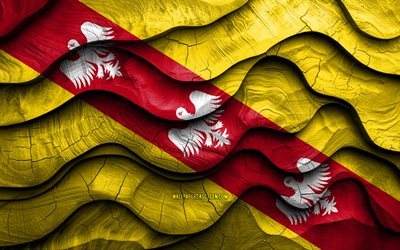
#4k#Duchy of Lorraine flag#Provinces of France#wooden 3D waves flags#Day of Duchy of Lorraine#flag of Duchy of Lorraine#France#Duchy of Lorraine wooden flag#Europe#french provinces#Duchy of Lorraine#wallpapers
1 note
·
View note
Photo
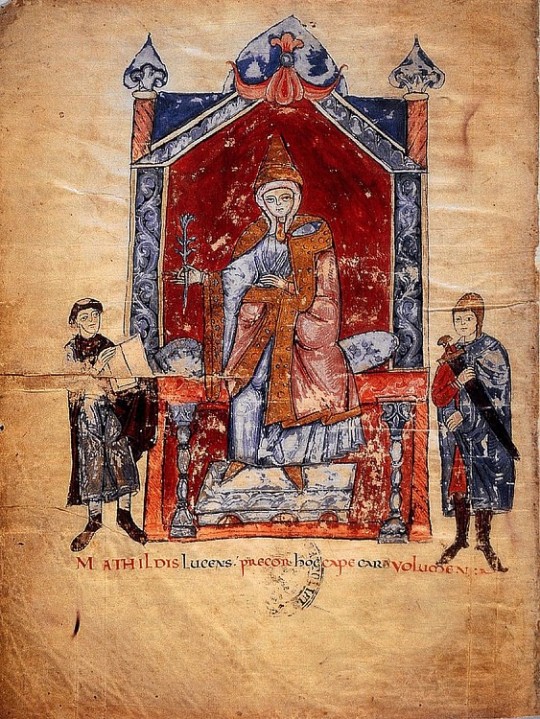
Matilda of Tuscany
Matilda of Canossa (c. 1046-1115), the Countess of Tuscany (r. 1055-1115) and Vice-Queen of Italy (r. 1111-1115), was the final head of the noble House of Canossa following the deaths of her father in 1052 and her elder brother in 1055. One of the most influential women of medieval Europe, Matilda is noted for her military and political prowess, her ceaseless patronage of the Christian Church, and her defense of Papal authority. Though a vassal of the Holy Roman Empire, Matilda often acted independently. Her conflict with the imperial state included a nearly lifelong military conflict with Henry IV (1050-1106), the German king (r. 1056-1105) and Holy Roman Emperor (r. 1084-1105).
Most of Matilda’s holdings, including her family’s ancestral castle of Canossa, were located across the plains of the Po Valley in northern Italy, an invaluable intersection of trade routes between the Italian peninsula and Italy’s northern neighbors beyond the Alps. In the southern part of Matilda domain beyond the Po Valley was the Duchy of Tuscany, rugged with mountains in its north, rural hills throughout, and vital roads connecting to Rome. With these possessions and an impenetrable alliance with the Christian Church, she became an influential political figure in medieval Europe. Matilda was often referred to as the Great Countess (la Gran Contessa) by contemporaries and scholars, despite this title being lesser than her truer title, that of the Margravine of Tuscany. Although she was considered the rightful heir to her father’s northern Italian holdings, Henry IV never recognized her claims to the lands within the Holy Roman Empire.
Early Life
Matilda was a descendent of the House of Canossa, a noble family established by her great-grandfather Atto Adalbert of Lucca (d. 988), a 10th-century Lombard military leader from Lucca and vassal to the German kings of Italy. Adalbert and his son Boniface expanded their domain and by 1027, the Canossa family's influence encompassed the counties of Brescia, Cremona, Ferrara, Mantua, Modena, Reggio Emilia, and Veneto. In 1027, Roman Emperor Conrad II (r. 1027-1039) transferred the Duchy of Tuscany to Boniface. As Schevill explained,
With Tuscany added to his strength ... Boniface completely dominated central and northern Italy; and since he clung to his superior, the emperor, with more consistency than was usual among feudal magnates, he served as the main pivot of the imperial power in Italy in his day. (53)
In 1037, Boniface married Beatrice of Lorraine (c. 1020-1076), a direct descendent of Charlemagne and Conrad’s niece by way of marriage. Matilda was born to Boniface and Beatrice in 1046 after two older siblings: Frederick and Beatrice. Matilda’s place of birth has been disputed, though scholars have suggested Canossa, Lucca, and Mantua. On 6 May 1052, when Matilda was six years old, Boniface was killed by an unknown assailant, likely by an assassin of Holy Roman Emperor Henry III (r. 1046-1056). Frederick inherited the feudal land of their father while Beatrice governed on his behalf. Matilda’s older sister died shortly after Boniface in 1053, though details are unclear.
In 1054, Beatrice married her first cousin Duke Godfrey the Bearded of Upper Lorraine, while Matilda was betrothed to the elder Godfrey’s son, Godfrey the Hunchback. Although Pope Leo IX, another cousin of Beatrice, gave them his blessing to marry, neither received consent from their king, Henry III.
Using the marital transgression to his advantage in 1055, Henry imprisoned Beatrice and Matilda at Bodfeld in current-day central Germany and claimed their holdings. Frederick, the only son and heir to Boniface, is thought to have died in 1055, leaving the young Matilda as the sole child of the Canossa dominion. Since women did not have the right to own, govern, or inherit feudal land under imperial law, Frederick’s death made not Matilda but Henry III, Beatrice’s closest adult male kin, the rightful heir to Boniface.
The mother and daughter remained in captivity until Henry III suddenly died in October 1056. Until the adulthood of Henry’s heir, Henry IV, the widowed Queen Agnes acted as regent to the young king. In exchange for a renewed oath of fealty from Godfrey the Bearded, Agnes freed her deceased husband’s prisoners and authorized the marriage of Godfrey and Beatrice. Godfrey, therefore, controlled the Canossa holdings and established his court in the Duchy of Tuscany, where the family returned by the spring of 1057. Information concerning Matilda’s youth beyond these events is terse.
The marriage of Beatrice to Godfrey the Bearded remained intact despite Henry III’s efforts and was recognized by Queen Agnes. Matilda’s inheritance in Italy was passed to the governance of her stepfather, who, in 1064, also inherited the Duchy of Upper Lorraine. With her role as heir forfeited to her stepfather, Matilda abandoned her ancestral home in Italy in favor of her husband’s in Upper Lorraine. The betrothal to her cousin Godfrey the Hunchback was not fulfilled by marriage until May 1069 when Matilda was 23 years old and the elder Godfrey was expected to die after falling ill. Upon his death, the titles in Italy and Lorraine were transferred to the younger Godfrey. The only child of Matilda by Godfrey was Beatrice, named after her grandmother, but she died shortly after birth, sometime between May and August 1071.
Continue reading...
45 notes
·
View notes
Text
the kingdom names in descendants are so bad that you have to take real life royal polities/states/monarchies to replace them ( for cinderellasburg? sardinia-piedmont, for charmington? any of the german states like hanover, for auroria? the duchy of lorraine? belgium? brittany? navarre? idk...)
#descendants#descendants 2#descendants 3#auradon#ben florian#king ben#mal bertha#evie grimhilde#jay descendants#carlos de vil#harry hook#uma descendants#uma daughter of ursula#audrey rose#chad charming#kingdoms
21 notes
·
View notes
Text

The Ionian Royal Family Tree,
In the style of UsefulCharts. "Hi, this is Matt Baker. Today I'm going to show you the Complete Family Tree of Ionian monarchs, all the way from their royal roots in the Wittenburg dynasty to their more recent dynastic alliances."
@trhor @royaltysimblr @officalroyalsofpierreland @simming-in-the-rain @nexility-sims @empiredesimparte Written Tree Below Cut. Open the image in a new tab, it’s quite large!
House of Wittenburg:
Prince Alexander, Graf March -> Grafin Wilhelmine married Bernard Arpad von Celle, Graf Celle -> The House of Rodchester.
The House of Rodchester:
Adelheid married the Margrave Nirgend. Marie-Odile became the Countess March and had non-dynastic issue. Everette I, Grand Duke Bergstrasse -> Kezia -> Everette II & Princess Alexandrina (daughter of Queen Alexandrina) -> Everette III establishes the Kingdom of Iona with his marriage to Hereditary Grand Duchess Hana Ludvig (daughter of Hans IV, Grand Duke Helmstadt).
Ludvig von Helmstadt:
Hans III married Princess Louise of Windenburg and San Myshuno -> Hans IV married Princess Marguerite of Pierreland -> Queen Hana of Iona.
Everette III's Children:
Rose Mary married the Count March. Stephen inherited the Grand Duchy of Helmstadt. Lorraine married King Arnaut of Uspana (son of Queen Beatriz) and had non-dynastic issue, including Crown Prince German. Queen Viviana I reorganizes the government, establishing the Ionian Union -> Princess Bernedette -> Queen Viviana II married Imperial Prince Philippe Simparte -> Prince Lenerd (rumored son of Crown Prince Louis of Pierreland) and Prince Sigismund.
#royal simblr#sims community#ts4 royalty#royal sims 4#ts4 storytelling#sims story#ts4 story#ch eloise#rodchester extras#ch vivi#ch yannik#ch sigis
72 notes
·
View notes
Text
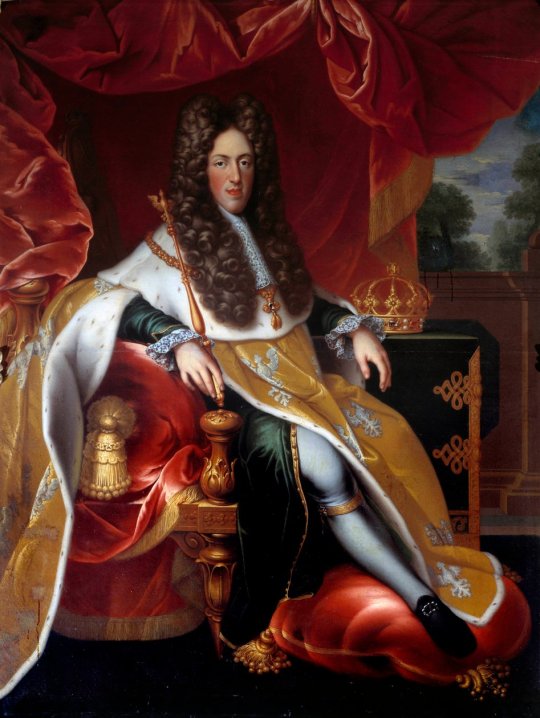
Portrait of Leopold I, Duke of Lorraine
Artist: Nicolas-Philippe Dupuy (French, 1650–1711)
Date: c. 1703
Medium: Oil on Canvas
Collection: The Museum of Fine Arts of Nancy, Nancy, France
Leopold, Duke of Lorraine
Leopold the Good (11 September 1679 – 27 March 1729) was Duke of Lorraine and Bar from 1690 to his death. Through his son Francis Stephen, he is the direct male ancestor of all rulers of the Habsburg-Lorraine dynasty, including all Emperors of Austria.
Leopold Joseph Charles Dominique Agapet Hyacinthe was the son of Charles V, Duke of Lorraine, and his wife Eleonora Maria Josefa of Austria, a half-sister of Leopold I, Holy Roman Emperor.
At the time of Leopold's birth, Lorraine and Bar had been occupied by Louis XIV of France, forcing his parents to move into exile to Austria, where they lived under the protection of the Emperor. Therefore, Leopold was born in the palace of Innsbruck and received his first name in honour of the Emperor. Leopold grew up in Innsbruck, while his father would be engaged in defending Vienna against the Turks.
In 1690, his father died and eleven-year-old Leopold inherited the still occupied Duchies. His mother, trying to fulfil her husband's last wishes of returning her children to their patrimony, appealed to the Reichstag in Regensburg to restore her son to Lorraine. Leopold was sent to Vienna to receive a military education under the supervision of the Emperor. In Vienna, he grew up with his cousins, the Archdukes Joseph and Charles, both future Emperors. Leopold was also created a Knight of the Order of the Golden Fleece that year.
Like his father before him, he entered the Imperial Army and, aged eighteen, took part in the Siege of Timișoara in 1694. Three years later, he received the command of the Army of the Rhine.
#portrait#oil on canvas#leopold i#duke of lorraine#habsburg-lorraine dynasty#nicolas philippe dupuy#french painter#royal throne#crown#costume#order of the golden fleece#wig#lorrain#painting#oil painting#artwork#fine art#full length#seated#royal robes#royal chair#drapery#specter#french culture#french art#european art#18th century painting
2 notes
·
View notes
Text
Closed starter: Sophie Osman and Barbara Lorraine (@crxwnedbarbie)
Location: The Marble Courtyard
Sophie loved the design of the courtyard, the strong contrast of the black and white stones formed in geometric precision while the gilded palace loomed behind. It was a stunning reminder of what France had been before the revolution and what many hoped it would become again. Still, there was change in the air as former duchies became kingdoms and countries were formed. While she pondered the implications, she noticed a blonde woman in front of her and decided to make new acquaintances; after all, was it not her job as Sultana to strengthen alliances or make new ones. "Is this not such a unique design for a palace? I find something new wherever I go," she remarked to the young woman. "Pardon, I should have introduced myself. I am Sophie Osman, Sultana of the Ottoman Empire."

29 notes
·
View notes
Text

MAP of the world of YM I love the worldbuilding for this series. For fun, here's a map. From what I noticed from the series, most, not all of these territories were mentioned, and here are some neat details:
Champagne, the Capital City, is split in half by a river (We can see RupeLali crossing it at the end of the kidnapping arc, when they back to the palace)
Morgan Barony - Riche was engaged to Baron Morgan in TL1 (unknown in TL2). Mariqus Gorten set it up as a political marriage, and Riche was not pleased. Despite being "only" a baron, he had tremendous political benefits since he occupied the area next to Champagne.
Auberine County - Count Auberine was one of the potential marriage candidates for Lari in TL2. Rupert took one look and identified him as a lame pervert lol.
Belois County actually has a lot of land, and has as much wealth and prestige as the Gorten Marquessate, whom has multiple mines. Belois also has a ton of knights in their personal army.
Count Vincent had a brief alliance with Marquis Gorten to de-stabilize Count Belois' power/authority (kidnapping arc). But that alliance fizzled (not much information) and the Vincent County didn't gain power as they hoped for.
The Hamel Viscountcy is kinda quiet. Their daughter, Sasha, attended Lari's bday party at the start and isn't mentioned again.
In terms of distance: on a good day, from Champagne to Belois is perhaps about a day a way, from Champagne to Lorraine is about half a day when in a rush (roughly)
The subcontinent of Vellnelni is mostly barren land except for the area where Champagne is - that's the center of commerce. It has long cold winters.
St Volgorwad is the holy city, has a nice blue lake there. The last few generations of the royal family (including RupeLali) aren't religious, so the power of the temple has really decreased. But the records of the "law of the land" are archived there, so they re-establish their bond with the temple, because more allies is always good, and they help Lari achieve power as Chief High Justice. But there very much is a separation of religion + state as before.
Surprisingly, Ardel isn't the capital of Willetan - Baha is.
In Willetan, we have the Miramonte Duchy - the ones who plotted to send Eva over as a slave with the Blue Eagle
Ardel is the area of commerce; it's also where Schlavi's (the magician's tower) is. Willetans are more open to using both Alchemy and Magic.
Eva was first sent to the Western Colonies as a slave/prisoner of war, where she met the Crazy War Hero, who fell in love with her at first sight.
Lari used up all her savings and purchased a small island/land off the Republic of Hirel as an emergency getaway for House Belois. This is also where Nigelle is said to have escaped to.
8 notes
·
View notes
Text
@classiqcals | Frederick and Lavinia, The Palace Courtyard
King Frederick Wolfenbuttel. Now, he liked the sound of that. Though it should not come as a surprise. For better or worse, he is a man born into luck (or luck, aided by privilege) and that luck puts him at equal footing with Europe's many rulers. Of course, it is not solely luck. The once-Duchy of Brunswick is vocal and relentless, in their pursuit of the truth. And once the Ottoman scum is exposed, he is the first to reap the rewards of his newly independent nation. What better way to celebrate, than to chat with an old friend (or foe)? "Your Highness." Frederick regards, formal yet with a hint of condescension. "It's rather funny, is it not? In a matter of months, you and I arrive at the same station." But where the Lorraine's bludgeoned and bribed their way into power, the Wolfenbuttel's merely glide into it. "To your victory." He caps his hat, with a smirk in full glow.
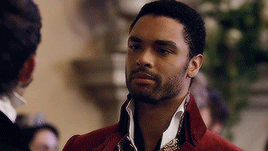
3 notes
·
View notes
Text

No
As Far as I understand henotheism means
Henotheism refers to a pluralistic theology wherein different deities are viewed to be of a unitary, equivalent divine essence.[2] Another term related to henotheism is "equitheism", referring to the belief that all gods are equal.[11] Furthermore, the term henotheism does not exclude monism, nondualism, or dualism.[6]
That's not how teh saints work
O.K. so saints are ALWAYS humans that distinguished themselefs in service of the christian god
A lot of them died as martyr but not all of them
-> Today you still can add saints to teh catalouge, teh catholic church has a procedure for that. You have to proof that these peopel had saintly qualities and if your proof is good enough they add a saint to the canon (usualyl popes and mother Theresa .. )
NOW
Saints are not equal to god
They are more like middle mamagment
They also have speciall resorts
Like St Nicholas (the one on 6th december who brings toys) his resorts are:
Children,coopers,travelers,sailors,fishermen,merchants,toymakers, boadcasters,the falsely accused, repentant thieves, brewers, pharmacists, archers, pawnbrokers, unmarried people, Prilep, Aberdeen, Galway, Albania, Russia, Greece, Hellenic Navy, Liverpool, Bari, Čilipi, Siġġiewi, Moscow, Amsterdam, Lorraine, Royal School of Church Music and Duchy of Lorraine, students in various cities and countries around Europe, Russian Navy
Now ANYONE can pray to ANY saint
But usually you pray to teh saint who is responsible for teh thing you have issues with
SO you wouldn't pray to St. nicholas to protect your home from fire that is St. Florians resort
Saints also have a strong connection to the places they where born in, died or at least lived and worked
In all those places you will find specially potent places of worship
(Praying to St Nicholas in Myra will allegedly work more potently then just praying to him at home)
Also places that have a piece of their saint (18 of the 12 apostels who are ALSO saints are burried in Spain alone ... ), they to are said to be especially potent ...
Of course these places also make lots of money with pillgrims ...
It's also interetsing that a lot of places where teh holy mother mary is worship (becasue she appeared to someone, that counts) Turn out to have been places of worship for heathem female gods ...
-> There is not a single original bone in christianity ... literally ... it's all derivative ...
SO basically you pray every day to god as a kind of maintenance
You pray to saints for specific issues
And only if that doesn't work you bring your griefance to teh big boss
consuming mass amounts of media related to my hyperfixation isnt enough i need to eat it
49K notes
·
View notes
Text
Events 8.16 (before 1920)
1 BC – Wang Mang consolidates his power in China and is declared marshal of state. Emperor Ai of Han, who died the previous day, had no heirs. 942 – Start of the four-day Battle of al-Mada'in, between the Hamdanids of Mosul and the Baridis of Basra over control of the Abbasid capital, Baghdad. 963 – Nikephoros II Phokas is crowned emperor of the Byzantine Empire. 1328 – The House of Gonzaga seizes power in the Duchy of Mantua, and will rule until 1708. 1513 – Battle of the Spurs (Battle of Guinegate): King Henry VIII of England and his Imperial allies defeat French Forces who are then forced to retreat. 1570 – The Principality of Transylvania is established after John II Zápolya renounces his claim as King of Hungary in the Treaty of Speyer. 1652 – Battle of Plymouth: Inconclusive naval action between the fleets of Michiel de Ruyter and George Ayscue in the First Anglo-Dutch War. 1777 – American Revolutionary War: The Americans led by General John Stark rout British and Brunswick troops under Friedrich Baum at the Battle of Bennington in Walloomsac, New York. 1780 – American Revolutionary War: Battle of Camden: The British defeat the Americans near Camden, South Carolina. 1792 – Maximilien de Robespierre presents the petition of the Commune of Paris to the Legislative Assembly, which demanded the formation of a revolutionary tribunal. 1793 – French Revolution: A levée en masse is decreed by the National Convention. 1812 – War of 1812: American General William Hull surrenders Fort Detroit without a fight to the British Army. 1819 – Peterloo Massacre: Seventeen people die and over 600 are injured in cavalry charges at a public meeting at St. Peter's Field, Manchester, England. 1841 – U.S. President John Tyler vetoes a bill which called for the re-establishment of the Second Bank of the United States. Enraged Whig Party members riot outside the White House in the most violent demonstration on White House grounds in U.S. history. 1844 – Governor-general of the Philippines Narciso Claveria, signs a decree to reform the country's calendar by skipping Tuesday, December 31, as a solution to anomalies that had existed since 1844. 1858 – U.S. President James Buchanan inaugurates the new transatlantic telegraph cable by exchanging greetings with Queen Victoria of the United Kingdom. However, a weak signal forces a shutdown of the service in a few weeks. 1859 – The Grand Duchy of Tuscany formally deposes the exiled House of Lorraine. 1863 – The Dominican Restoration War begins when Gregorio Luperón raises the Dominican flag in Santo Domingo after Spain had recolonized the country. 1869 – Battle of Acosta Ñu: A Paraguayan battalion largely made up of children is massacred by the Brazilian Army during the Paraguayan War. 1870 – Franco-Prussian War: The Battle of Mars-la-Tour is fought, resulting in a Prussian victory. 1876 – Richard Wagner's Siegfried, the penultimate opera in his Ring cycle, is premiered at the Bayreuth Festspielhaus. 1891 – The Basilica of San Sebastian, Manila, the first all-steel church in Asia, is officially inaugurated and blessed. 1896 – Skookum Jim Mason, George Carmack and Dawson Charlie discover gold in a tributary of the Klondike River in Canada, setting off the Klondike Gold Rush. 1900 – The Battle of Elands River during the Second Boer War ends after a 13-day siege is lifted by the British. The battle had begun when a force of between 2,000 and 3,000 Boers had surrounded a force of 500 Australians, Rhodesians, Canadians and British soldiers at a supply dump at Brakfontein Drift. 1906 – The 8.2 Mw Valparaíso earthquake hits central Chile, killing 3,882 people. 1913 – Tōhoku Imperial University of Japan (modern day Tohoku University) becomes the first university in Japan to admit female students. 1913 – Completion of the Royal Navy battlecruiser HMS Queen Mary. 1916 – The Migratory Bird Treaty between Canada and the United States is signed. 1918 – The Battle of Lake Baikal was fought between the Czechoslovak Legion and the Red Army.
0 notes
Text

youtube
Video from the series "String of Pearls" directed by Cinzia Th. Torrini/ Written & directed by: Cinzia Th. Torrini / Production: Cassiopea Film Production S.r.l., Rome/for Marchesi Antinori S.p.A., winemakers
Voice over: Edwin Alexander Francis
N°. 1: Le Mortelle
The Le Mortelle estate is located in the Tuscan Maremma near the town of Castiglione della Pescaia. It was once part of a even larger property called La Badiola, important enough to be already identified on the maps of Grand Duke Leopoldo II of Tuscany in the 19th century. The Hapsburg Lorraine rulers of the Grand Duchy, by draining the marshy and malaria-ridden area around Grosseto, the local capital, wished to make their La Badiola and Alberese estates model properties for the raising of cattle.
The estate has belonged to the Antinori family since 1999, and it has worked both on the vineyards and the new cellars with the firm conviction that the area, at the time just emerging into prominence in the overall panorama if Italian wine, had a very significant potential for the production of high quality wine. The family also believed that here the finest characteristics of the terroir and the varieties to be planted could fully find an excellent expression.
Mortella is the name of the wild myrrh which characterizes this coastal area of Tuscany and is the symbol of the property: it also derives its name from this fragrant Mediterranean shrub.
for in-depth info ->
The Antinori family ->
N°.2 ->
The Guado al Tasso estate is located near Bolgheri on the Tuscan coast, 96 kilometers (60 miles) to the southwest of Florence. The 300 hectares (750 acres) planted to vineyards on the property are in the center of the so-called” Bolgheri amphitheater”: rolling hillsides which surround a splendid plain which slopes gently towards the sea and create a micro-climate with unique characteristics. Guado al Tasso, the flagship wine of the estate, expresses all of the force and suppleness of this corner of the upper Maremma. It has contributed to raise Bolgheri to the level of the most important areas of Europe’s viticulture, expressing a decisively Mediterranean character of power, elegance, and balance.
youtube
N°.3 ->
The Fattoria Aldobrandesca estate is located near the town of Sovana in the isolated, uncontaminated southern part of the Tuscan Maremma. The area is characterized by its fertility, indeed by its virtually wild character. In this rich territory, the Aldobrandesca estate represents a microcosm of incredible variety. In the space of a very few hectares, the soil takes on many different shadings of color: white pumice stone, tufaceous soils which range from yellow to garnet red, black volcanic rock. And, yet again, all the various shades of brown. It is here, with this diversity of minerals, that international varieties such as Cabernet Sauvignon and Malbec are cultivated, as is the native Aleatico, all with interesting results, immersed as they are in a microcosm of differing soils and in a temperate micro-climate which benefits from the nearby presence of the Argentario peninsula, jutting out into the Mediterranean Sea.
youtube
for in-depth info ->
N°.4 La Braccesca estate - Montepulciano
Just a few miles away from the city of Montepulciano, near the border between Tuscany and neighboring Umbria, the La Braccesca estate is surrounded by a splendid territory, first Etruscan and Roman, then medieval and Renaissance. The property extends over 508 hectares (1255 acres) where, once upon a time, the holdings of the Bracci counts– who gave their name to the estate - were located: the counts, whose name means “arm” in Italian, also gave their coat of arms to the property, an armored arm which holds a sword. The land owned by La Braccesca is situated in two very close, but entirely different, zones: Montepulciano, the classic and prestigious area of “Vino Nobile”, and Cortona, which has made a name for itself in world markets principally with international grape varieties, above all Syrah. These two different ���souls”, the essential spirit of different terroirs, represent the La Braccesca style with its respect for tradition and, at the same time, tireless research, its balance between the old and the new, its professional mastery in its work and its passion for quality. The wines of the La Braccesca estate are the results of this happy synthesis.
youtube
for in-depth info ->
N°.5
The Tenuta Tignanello estate is in the heart of Chianti Classico, in the gently rolling hillsides between the Greve and Pesa river valleys. It extends over an area of 319 hectares (788 acres), of which about 130 (321 acres) are dedicated to vines. Two of the estate’s prized vineyards are on the same hillside, Tignanello and Solaia, on soils that originated from marine marlstone from the Pliocene period rich in limestone and schist. The vines enjoy hot temperatures during the day and cooler evenings throughout the growing season. The estate’s two signature wines, Solaia and Tignanello, are produced from these vineyards and have been defined by the international press as “among the most influential wines in the history of Italian viticulture”.
youtube
for in-depth info ->
N°.6 ->
The Castello della Sala towers over a tufaceous promontory of the Umbrian Apennines (at 534 meters, or some 1750 feet, above sea level) just a short distance away from the boundary with Tuscany and approximately 18 kilometers (11 miles) from the historic city of Orvieto. It is a lovely medieval fortress, surrounded by historic, hillside Etruscan villages, halfway between the Paglia river and the peak of Mount Nibbio. The estate consists of a total surface area of 500 hectares (1250 acres), 140 of which (345 acres) are planted to vineyards located at 200-450 meters (650-1480 feet) above sea level on clayey soils rich in Pliocene-epoch fossils of volcanic and sedimentary origin. Approximately eight hectares (20 acres) are covered by olive groves for the production, for domestic use, of extra-virgin olive oil.
youtube
for more in-depth information on the Castello della Sala castle and vineyard, please click on the link below ->
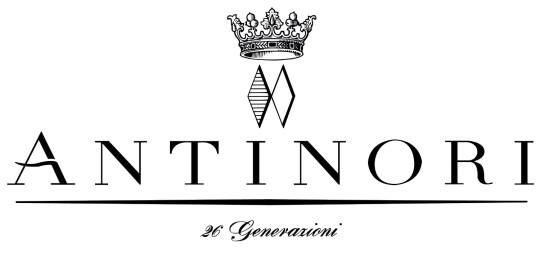
0 notes
Text
Nancy
City in France
Nancy, a riverfront city in the northeastern French region of Grand Est, is known for its late baroque and art nouveau landmarks, some dating to its days as the former capital of the Duchy of Lorraine. Its focal point is the 18th-century Place Stanislas. This grand square, decorated with gilded wrought-iron gates and rococo fountains, rests by the ornate palaces and churches filling the city’s medieval old town.
Area: 15.01 km²
Postal code: 54395 /54000
Area1: 15.01 km2 (5.80 sq mi)
Arrondissement: Nancy
Demonym(s): Nancéien (masculine); Nancéienne (feminine)
Nancy — Wikipédia
Nancy, France - Wikipedia

Nancy, France by hapephotographix
895 notes
·
View notes
Text

Wyczarowanie przerażającej magii horroru
Gatunek horroru zawsze zajmował szczególne miejsce w sercach kinomanów poszukujących mocnych wrażeń, a niewiele marek zdołało tak urzekać widzów jak seria filmowa Obecność. Od samego początku ten mrożący krew w żyłach kinowy wszechświat zabiera widzów w przerażającą podróż przez nawiedzone domy, demoniczne opętania i dochodzenia dotyczące zjawisk nadprzyrodzonych. W tym artykule przyjrzymy się wyjątkowym aspektom, które sprawiają, że serial „Obecność” wyróżnia się w świecie horrorów, i zagłębimy się w szerszą atrakcyjność horroru jako gatunku.
Wszechświat Przywoływania w serii
Tym, co wyróżnia serię „Obecność”, jest jej wzajemnie powiązany wszechświat. Podczas gdy wiele serii horrorów opowiada się za samodzielnymi historiami, „Obecność” splata gobelin paranormalnych doświadczeń, wprowadzając szereg postaci i bytów, które składają się na nadrzędną narrację. Od Warrenów, prawdziwych badaczy zjawisk paranormalnych granych przez Patricka Wilsona i Verę Farmigę, po złowrogie duchy nawiedzające różne rodziny, każda część składa się na ogólną mitologię, tworząc poczucie ciągłości, która sprawia, że widzowie wracają po więcej. Podobnie film Zakonnica 2 online, która zagłębia się w to universum.
Na podstawie prawdziwych wydarzeń
Jednym z najbardziej fascynujących aspektów serii „Obecność” jest jej oparcie na rzeczywistych przypadkach badanych przez Eda i Lorraine Warrenów. To powiązanie z prawdziwymi wydarzeniami dodaje widzom dodatkowej warstwy strachu, dzięki czemu zjawiska nadprzyrodzone ukazane na ekranie są jeszcze bardziej niepokojące. Autentyczność i dbałość o szczegóły w odtwarzaniu tych przypadków przyczyniają się do wciągającego i mrożącego krew w żyłach doświadczenia, które definiuje markę.
Mistrzowskie opowiadanie historii w horrorze
Sercem każdego udanego horroru jest dobrze skonstruowana historia, a serial „Obecność” przoduje pod tym względem. Filmy umiejętnie budują napięcie, wykorzystując połączenie nastrojowych zdjęć, niesamowitego dźwięku i fachowej dynamiki, aby stworzyć intensywną i pełną napięcia atmosferę. Narracje często łączą elementy horroru psychologicznego z jump-scare'ami, zapewniając wielowymiarowy strach, który trafia do zróżnicowanej publiczności.
Rozszerzanie uniwersum horroru
Poza serią „Obecność” gatunek horroru przeżywa w ostatnich latach renesans. Filmy takie jak „Uciekaj”, „Ciche miejsce” i „Dziedzictwo” przesunęły granice tradycyjnego horroru, badając kwestie społeczne, dynamikę rodziny i terror psychologiczny. Ta ewolucja pokazuje zdolność gatunku do dostosowywania się do zmieniających się lęków społecznych, przy jednoczesnym zachowaniu jego podstawowego uroku – dreszczyku emocji przed nieznanym i strachu przed zjawiskami nadprzyrodzonymi.
Urok horroru dla widzów
Dlaczego widzowie chętnie poddają się terrorowi horrorów? Odpowiedź leży w przypływie adrenaliny i oczyszczającym uwolnieniu, które wynika z konfrontacji ze strachem w kontrolowanym środowisku. Horror pozwala nam eksplorować mroczniejsze zakamarki naszej wyobraźni, siedząc bezpiecznie w teatrze lub na kanapach, przypominając nam o kruchości naszego istnienia i nieznanym, które czai się w cieniach.
Czy ta seria to dobre horrory?
Seria „Obecność” stała się kamieniem węgielnym współczesnego horroru, urzekając widzów mrożącymi krew w żyłach opowieściami o zjawiskach nadprzyrodzonych. Łącząc bogate, powiązane ze sobą uniwersum z mistrzowską narracją i oparciem na prawdziwych wydarzeniach, filmy te na nowo zdefiniowały, co to znaczy bać się w kinie. Wraz z ewolucją gatunku horroru, „Obecność” stanowi świadectwo trwałej siły strachu i dreszczyku emocji związanego z nieznanym. Tak więc, gdy następnym razem przyciągnie Cię ciemność nawiedzonego domu na ekranie, pamiętaj, że nie jesteś sam — magia kina grozy jest po to, aby wyczarować Twoje najgłębsze lęki i zapierać dech w piersiach.
0 notes
Text
딜리버리맨 드라마 다시보기 1화~12화 (완결) ENA
딜리버리맨 드라마 다시보기 1화~12화 (완결) ENA 링크<<

딜리버리맨 드라마 다시보기 1화~12화 (완결) ENA
딜리버리맨 드라마 다시보기 1화~12화 (완결) ENA
딜리버리맨 드라마 다시보기 1화~12화 (완결) ENA
딜리버리맨 드라마 다시보기 1화~12화 (완결) ENA
딜리버리맨 드라마 다시보기 1화~12화 (완결) ENA
People from the Standeshair family were treated as equal marriages, not nominal marriages. In reality, there were times when she wasn't kept well… refer to that document. Of course, in modern times, in addition to the old royal family and the Standesheir family, the Hessen-Kassel family and the Hanover dynasty, which were merged into the Kingdom of Prussia in 1866, are also eligible for equal marriage with foreign royal families. In the case of the Hessen-Kassel family, the Grand Duchy of Hesse, ruled by their relative, the Hessen-Darmstadt family, remained as a constituent state of the German Empire, and the Hanover family was also a relative of the British royal family, so even if the country disappeared, unlike the Standeshair, it was recognized as a royal bloodline. The kingdoms (Bayern, Saxony, Württemberg), 6th Grand Duchy, 5th Duchy, and 7th Duchy, which became constituent states after the establishment of the German Empire in 1871, were not incorporated into Prussia but were federal constituent states of the German Empire, so these also They were eligible for equal marriage with a foreign royal family.
In addition to the above cases, the descendants of the generally abolished royal family are usually treated equally with the reigning royal family in matters of marriage between the nobles and the heavens. In the case of the above-mentioned case of the Hessen-Kassel family, the Grand Duchess of Tuscany, a branch of the Habsburg family, the Parma family, and the Two Sicilies, a branch of the Bourbon royal family, there are cases where the abolished royal family is a branch of the reigning royal family, and even if it is not such a case, Europe This is because the princes and princesses of usually have a complicated blood relationship. In the case of France, marriage between the noble and the lowly was not strictly regulated by law, but it was customarily avoided. Since French aristocrats had to obtain the permission of the French monarch or their lord before marrying, noble marriages were filtered out.
In the case of monarchs, there was the marriage of the Duke of Orléans, who later ascended the throne as Henry II, and Catherine de Medici of the Medici family. However, since her older brother, Prince François, was alive at this time, she did not think that Catherine would become queen. Later, when Henry II ascended the throne, Catherine's status was a problem, but it was recognized as a general marriage because there was no set rule. In fact, Catherine de' Medici was a descendant of a merchant on her father's side and was a member of the Medici family, but on her mother's side she inherited the blood of French royalty. Catherine de' Medici's maternal grandmother, Jeanne, was a daughter of the Bourbon family, a descendant of the royal family, and her daughter Madeleine married Lorenzo Medici, a niece of the pope, according to the will of the King of France, who had his eyes on Italy at the time. Their daughter is Catherine de Medicis. Lorenzo Medici was also titled 'Duke of Urbino' by her uncle, and after Lorenzo's death, Urbino passed to another family, but the title nominally passed to Catherine, who married Henri as 'Duke of Urbino'. In other words, it may be a noble marriage in terms of paternal lineage, but it has some shape in terms of maternal lineage.
Later, in the case of King Henri III, he married Princess Louise of Lorraine, but Louise was only occasionally said to be of a low class, and it was also considered an equal marriage. Strictly speaking, Queen Louise's low status had nothing to do with her family. It was because Edda, the daughter of the second son of the Duke of Lorraine, who was far from her sovereignty, and her father had remarried twice, so she was living under her second stepmother who was 3 years older than her, and was being mistreated like Cinderella. In addition, Henri III, who was famous for being sentimental and impromptu, broke up with his lover, the Duchess of Condé after failing to marry, and on the way to the Polish-Lithuanian coronation ceremony, he suddenly met Louise, who was on a family trip, and suddenly proposed to her. These were the words that the original bride candidates complained about.
In the case of Lorraine, it is a strict ruling family, and members of the Lorraine family can marry members of the royal family of other countries.[16] In fact, the 'lower' family was not the Lorraine family, but its branch, the Guise family, and was treated as a Foreign Prince[18] half a level lower than the ruling family. For example, Charles V, Duke of Lorraine [19] married Eleanor of Austria, half-sister of Leopold I, a close friend, and his son, Duke Leopold of Lorraine, married Louis XIV's niece Elizabeth Charlotte d'Orléans (Louis XIII's second son). The third daughter of the Duke of Orléans, and grandson François Étienne de Lorraine, married Maria Theresia of Austria, who later became Holy Roman Emperor Franz I. In addition, Franz I's younger sister had a marriage talk with Louis XV and her maternal cousin, Duke Louis Dorleans [20], but it was canceled by the Prime Minister, the Duke of Condé, and then married Carlo Emanuele III of the Kingdom of Sardinia.
Later, in the case of Louis XIV, he had a secret marriage with Madame de Maintenon, and considering that he tried to give succession rights to bastard children (more precisely, illegitimate children)[21] [22]
0 notes
Photo
Louis XV (15 February 1710 – 10 May 1774), known as Louis the Beloved (French: le Bien-Aimé),[1] was King of France from 1 September 1715 until his death in 1774. He succeeded his great-grandfather Louis XIV at the age of five. Until he reached maturity (then defined as his 13th birthday) in 1723, the kingdom was ruled by his grand-uncle Philippe II, Duke of Orléans, as Regent of France. Cardinal Fleury was chief minister from 1726 until his death in 1743, at which time the king took sole control of the kingdom.
His reign of almost 59 years (from 1715 to 1774) was the second longest in the history of France, exceeded only by his predecessor, Louis XIV, who had ruled for 72 years (from 1643 to 1715). In 1748, Louis returned the Austrian Netherlands, won at the Battle of Fontenoy of 1745. He ceded New France in North America to Great Britain and Spain at the conclusion of the disastrous Seven Years' War in 1763. He incorporated the territories of the Duchy of Lorraine and the Corsican Republic into the Kingdom of France. Historians generally criticize his reign, citing how reports of his corruption embarrassed the monarchy, while his wars drained the treasury and produced little gain. A minority of scholars dispute this view, arguing that it is the result of revolutionary propaganda. His grandson and successor Louis XVI inherited a large kingdom in need of financial and political reform which would ultimately lead to the French Revolution of 1789.
Jean-Baptiste van Loo (14 January 1684 – 19 December 1745) was a French subject and portrait painter.
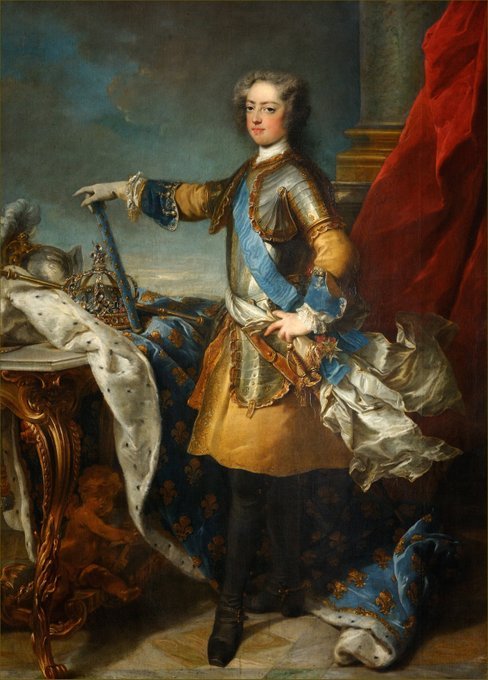
Jean-Baptiste van Loo: Luís XV de Francia aos 17 anos (1727)
31 notes
·
View notes
Text
Events 8.16 (before 1900)
1 BC – Wang Mang consolidates his power in China and is declared marshal of state. Emperor Ai of Han, who died the previous day, had no heirs. 942 – Start of the four-day Battle of al-Mada'in, between the Hamdanids of Mosul and the Baridis of Basra over control of the Abbasid capital, Baghdad. 963 – Nikephoros II Phokas is crowned emperor of the Byzantine Empire. 1328 – The House of Gonzaga seizes power in the Duchy of Mantua, and will rule until 1708. 1513 – Battle of the Spurs (Battle of Guinegate): King Henry VIII of England and his Imperial allies defeat French Forces who are then forced to retreat. 1570 – The Principality of Transylvania is established after John II Zápolya renounces his claim as King of Hungary in the Treaty of Speyer. 1652 – Battle of Plymouth: Inconclusive naval action between the fleets of Michiel de Ruyter and George Ayscue in the First Anglo-Dutch War. 1777 – American Revolutionary War: The Americans led by General John Stark rout British and Brunswick troops under Friedrich Baum at the Battle of Bennington in Walloomsac, New York. 1780 – American Revolutionary War: Battle of Camden: The British defeat the Americans near Camden, South Carolina. 1792 – Maximilien de Robespierre presents the petition of the Commune of Paris to the Legislative Assembly, which demanded the formation of a revolutionary tribunal. 1793 – French Revolution: A levée en masse is decreed by the National Convention. 1812 – War of 1812: American General William Hull surrenders Fort Detroit without a fight to the British Army. 1819 – Peterloo Massacre: Seventeen people die and over 600 are injured in cavalry charges at a public meeting at St. Peter's Field, Manchester, England. 1841 – U.S. President John Tyler vetoes a bill which called for the re-establishment of the Second Bank of the United States. Enraged Whig Party members riot outside the White House in the most violent demonstration on White House grounds in U.S. history. 1858 – U.S. President James Buchanan inaugurates the new transatlantic telegraph cable by exchanging greetings with Queen Victoria of the United Kingdom. However, a weak signal forces a shutdown of the service in a few weeks. 1859 – The Grand Duchy of Tuscany formally deposes the exiled House of Lorraine. 1863 – The Dominican Restoration War begins when Gregorio Luperón raises the Dominican flag in Santo Domingo after Spain had recolonized the country. 1869 – Battle of Acosta Ñu: A Paraguayan battalion largely made up of children is massacred by the Brazilian Army during the Paraguayan War. 1870 – Franco-Prussian War: The Battle of Mars-la-Tour is fought, resulting in a Prussian victory. 1876 – Richard Wagner's Siegfried, the penultimate opera in his Ring cycle, premieres at the Bayreuth Festspielhaus. 1891 – The Basilica of San Sebastian, Manila, the first all-steel church in Asia, is officially inaugurated and blessed. 1896 – Skookum Jim Mason, George Carmack and Dawson Charlie discover gold in a tributary of the Klondike River in Canada, setting off the Klondike Gold Rush.
1 note
·
View note